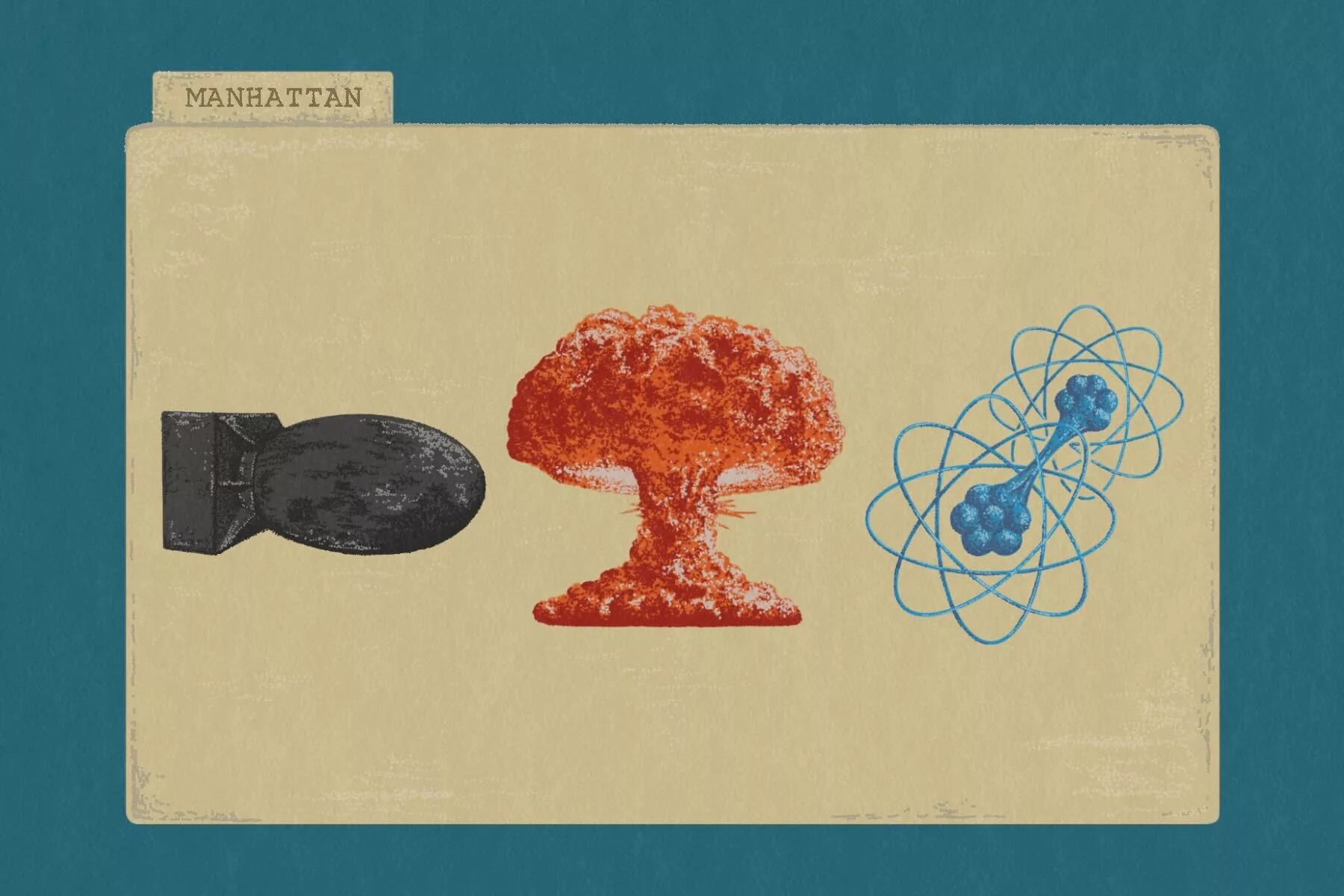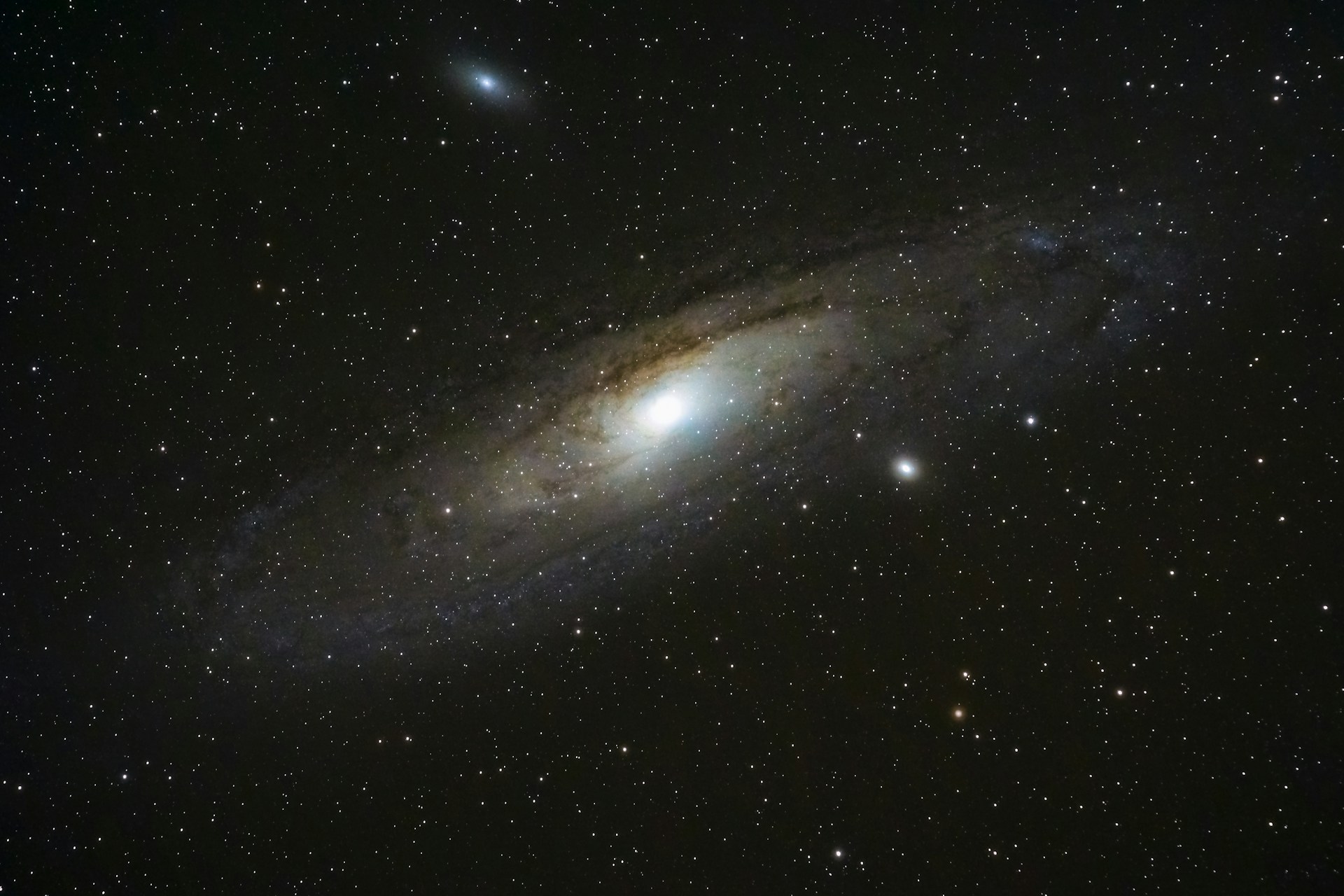Exploring the ethical and scientific complexities of the Manhattan Project and its legacy in nuclear physics. Image credit: Frankie Frazer, The Oxford Scientist.
‘Now I am become death, destroyer of worlds’, said J. Robert Oppenheimer when he famously quoted Hindu scripture in an interview following the creation of the atomic bomb.
When Einstein published his annus mirabilis (or miracle year) papers in 1905 he could not have dreamt the impact his work would have on humanity and our understanding of the universe. In what was his fourth and final paper of the later dubbed miracle year, he deduced what is certain to be the most famous physics equation of all: E = mc2. This concept of mass-energy equivalence has had many poignant implications, especially when applied in nuclear physics.
While nuclear physics has somewhat helped decrease our reliance on fossil fuels, what sticks in the public mind much more is its use in mass destruction—the atomic bomb. With the release of Christopher Nolan’s blockbuster Oppenheimer, the eponymous “father of the atomic bomb” has once again been brought into the spotlight. Sharing the silver screen with Cillian Murphy as J. Robert Oppenheimer are other key individuals which played their role in the atomic bomb’s creation: Ernest Lawrence, Richard Feynman and Niels Bohr to name just three. Together, these scientists made up what is known as the Manhattan Project, the secret name for the West’s race to create an atomic bomb. However, the film limits itself on delving into the scientific background that paved the way for this creation to be possible. What discoveries led up to the Manhattan Project? And how did the minds behind the work feel about the morbid eventuality?
Together, these scientists made up what is known as the Manhattan Project, the secret name for the West’s race to create an atomic bomb.
The pace of physics in the early 20th century was astonishing. The successive discoveries of mass-energy equivalence, atomic structure and nuclear fission all occurred in just the first 40 years. Nuclear fission reactions are mass-energy equivalences in action—atoms split to release energy and neutrons, which go on to split further atoms. The timing and location of these advances in our nuclear understanding arguably spurred the very inception of the Manhattan Project. This central process of fission was discovered by German scientists at the University of Berlin just five years after Hitler was appointed Chancellor, in 1938.
In what unfolded next, there is one character who was particularly important: Niels Bohr. Bohr developed upon atomic theory following Rutherford’s famous gold-leaf experiment of 1909, which showed atoms consist mainly of empty space and a positively charged centre—a nucleus—with orbiting electrons around it. In fact, it would be Bohr who brought the news of the Germans splitting the atom to the United States at the start of 1939. Nuclear fission now was a reality.
The news of nuclear fission had not gone unnoticed by Hungarian physicist Leo Szilard. Szilard experimented with heavy atoms to try and spark a sustained nuclear chain reaction. This would unleash astronomical amounts of energy within seconds—good news for power generation, whether in a reactor or a bomb. While Szilard would go on to create the first self-sustaining nuclear chain reactor with Enrico Fermi (the Chicago Pile-1 in 1942), he had become worried about the Germans potentially exploiting nuclear fission in a weapon of mass destruction in 1939.
Therefore, on 2 August 1939—one month before Hitler invaded Poland—Szilard and others drafted a letter to President Roosevelt warning him of the possibility of a German bomb. Szilard had managed to get it signed by none other than Einstein himself who had been quoted as, ‘not even [having thought] about that [possibility]’.
It was clear at this point that time was of the essence. Germany had banned the sales of uranium harvested from Czechoslovakian mines under its occupation.
It was clear at this point that time was of the essence. Germany had banned the sales of uranium harvested from Czechoslovakian mines under its occupation. It was clear they had a nuclear bomb in their sight. Szilard himself had found that uranium would be the element required to sustain a chain reaction, specifically the rarer U-235 isotope. Scientists at the University of Birmingham found that the critical mass (the mass needed for a sustained chain reaction of uranium-235) would be in the order of magnitude of 10kg, a perfect payload for contemporary bombers. Physicists worried that the possibility of the atom bomb had become a reality.
Just over two years later, the Manhattan Project was formally established. With over 130,000 total global contributors at its peak and a virtually infinite budget (which had come up to $2.2bn dollars—around $24bn today), this project had its own breakthrough discoveries. Work had to be done on uranium extraction and purification (to obtain the U-235 isotope needed for sustained fission) as well as fundamental weapon design. Spread across over 20 sites in North America, the Manhattan Project was also a logistical challenge, especially given the confidentiality requirements. On top of this, it was hard for many scientists to separate their work from their political and/or moral beliefs. Many who worked on the project consoled their moral qualms with reasoning that the US having access to nuclear bombs was the lesser of two evils.
The Manhattan Project scientists enjoyed many successes. Richard Feynman, once a junior researcher on the project, would go on to revolutionise the field of quantum electrodynamics. At Los Alamos (the remote site Oppenheimer chose for the Manhattan Project), Feynman was responsible for working with Hans Bethe to derive a formula to calculate the yield of fission bombs—the Feynman-Bethe formula. The yield, usually expressed in tonnes of TNT, is an indication of the energy a bomb releases. The famous Trinity test of the first nuclear weapon at the conclusion of the Manhattan Project had a yield of around 20 kilotonnes of TNT. Following the test Feynman (just as almost any other scientist working on the Manhattan Project) became increasingly “anxious about the weapon” and the potential for a nuclear arms race, especially regretting not reconsidering his work after German surrender.
While Feynman also believed that the development of the atomic bomb by the Western world was the lesser of two evils, it was clear towards the end of the project that Germany would surrender. Hitler had killed himself almost two months prior to the Trinity test. The focus was now on Japan, with whom the US had already been at war with for almost four years. Following Japan’s refusal to surrender at the Potsdam Conference, Little Boy was dropped on Hiroshima and Fat Man was dropped on Nagasaki in August 1945. There were around 200,000 instant fatalities.
While the threat of nuclear war may seem like something we parted with in the Cold War, reflecting on the pace of advancement of modern science is a stark reminder that great science can have destructive consequences.
Calls for international control of nuclear research and atomic weapons by leading physicists were ignored following WW2. Niels Bohr himself wrote a letter to the UN urging ‘free flow of scientific and technological information’ between continents to ensure peace and transparent cooperation. While Bohr had ties with the Manhattan Project, he was hesitant to directly work on the bomb. He said, ‘they didn’t need [his] help in making the atomic bomb’. After fleeing Europe in fear of his Jewish heritage, he often visited the Los Alamos site under the alias “Nicholas Baker”. For moral reasons or otherwise, he acted only as a “father figure”, overseeing younger physicists of the project. Bohr had always had foresight regarding the risks of nuclear arms so it was no surprise he led calls for international cooperation on nuclear research, as well as campaigning against the development of hydrogen bombs.
Almost 80 years after Bohr wrote his letter, we live in a world where the most powerful nuclear weapon detonated had a yield of over 50 million tonnes of TNT—more than 2000 times as powerful as the Trinity test (the initial test of the very first atomic bomb, concluding the Manhattan Project). There have been attempts at global cooperation: the formation of the International Atomic Energy Agency and the signing of the Treaty on the Non-Proliferation of Nuclear Weapons (NPT). However, nine countries are now in possession of some 13,000 nuclear weapons. Some of these countries are currently involved in international conflicts—including Russia’s attack on Ukraine. While the threat of nuclear war may seem like something we parted with in the Cold War, reflecting on the pace of advancement of modern scienceis a stark reminder that great science can have destructive consequences.





